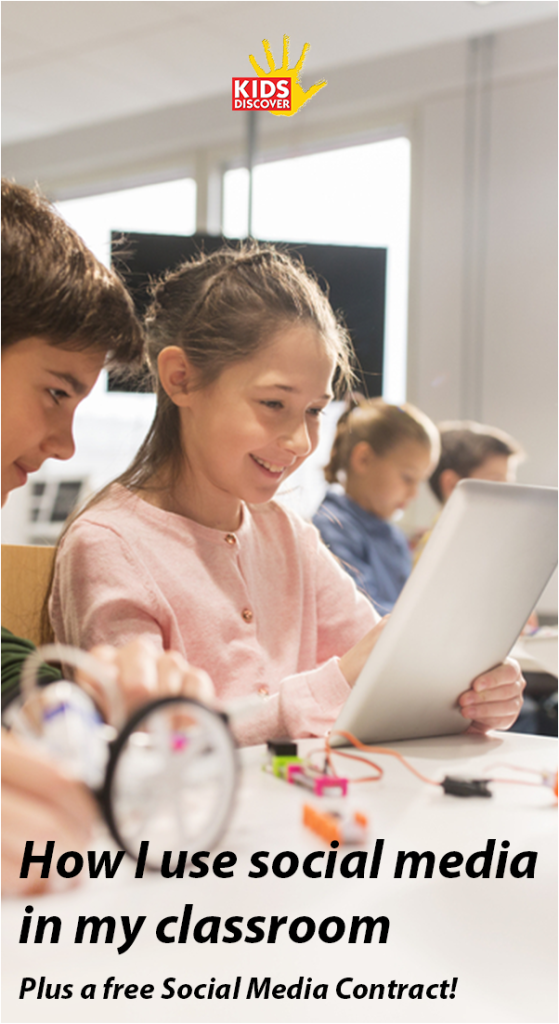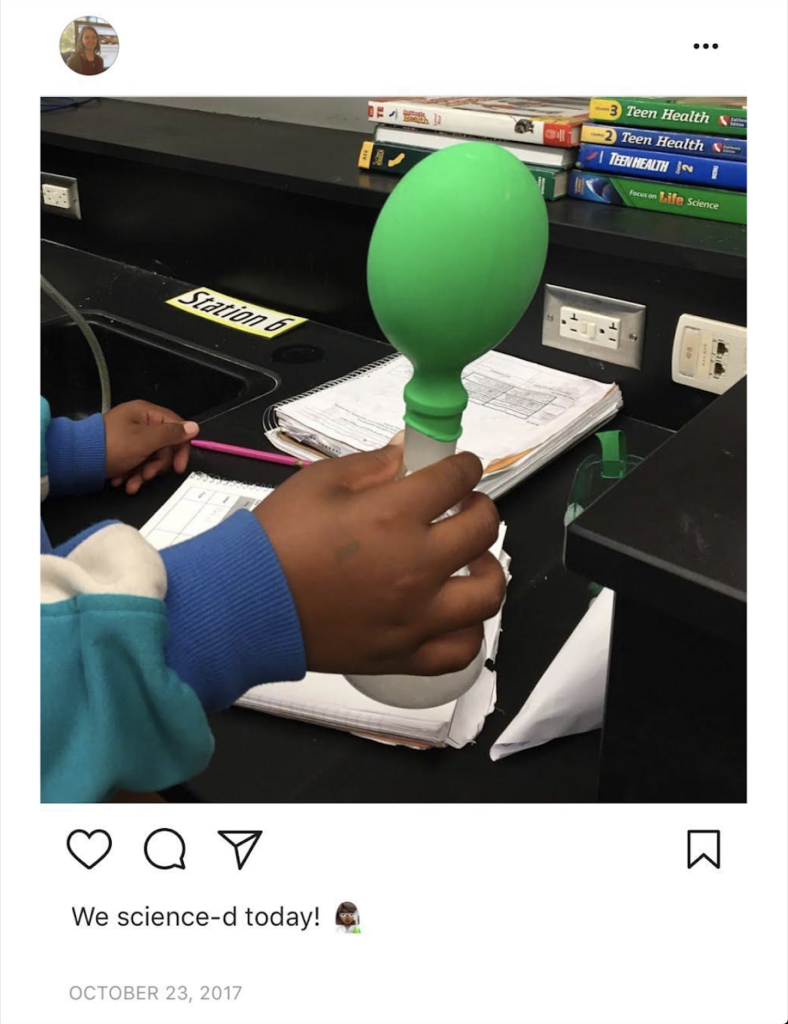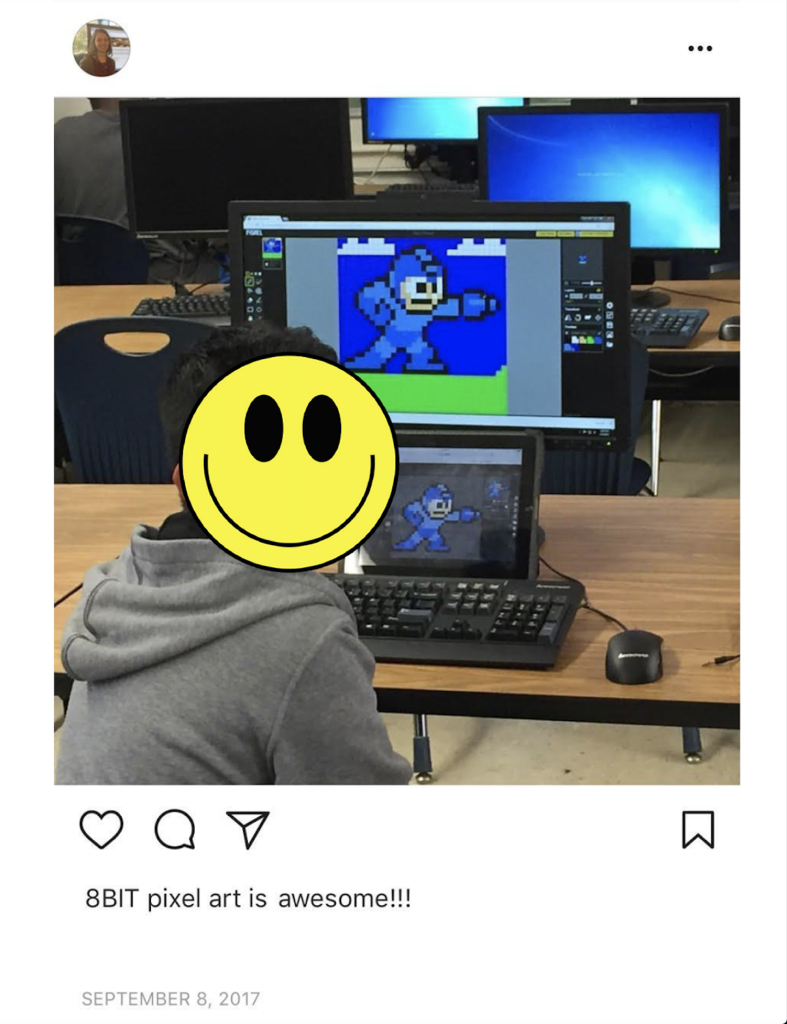How I Use Social Media in My Classroom
- January 29, 2018
- By Mari Venturino
 Social media is a big part of many young people’s lives. Instead of fighting against social media in our classrooms and schools, we can come alongside our students and join them on social media! When we bring the learning into their court, we make school more engaging and relevant.
Social media is a big part of many young people’s lives. Instead of fighting against social media in our classrooms and schools, we can come alongside our students and join them on social media! When we bring the learning into their court, we make school more engaging and relevant.
How I use social media in my classroom:
In my 7th-grade science class, I use Twitter, Instagram, and Snapchat to share what we are learning with my students and their parents. This is an optional and extracurricular activity for my students; in order to participate, a student’s parent must sign our classroom social media contract to give their student permission to participate.
At the beginning of the year, we discuss appropriate posting and interactions on social media, the purpose, and the benefits of using this in our classroom. My students generally love having their work and activities highlighted, especially on Snapchat and Instagram. When posting photos or videos, I am careful not to post individual student faces or names (unless I ask the student for permission first).
As we are doing labs, I will frequently bring my iPad to students to have them take a picture of their work, caption it, allow me to check it, then post the picture to Instagram. Other times, I’ll take a video of students working, then ask a student to write a caption for our Snapchat story. (Bonus: I’ll allow my students to pick a school-appropriate Bitmoji for the Snap, too!)
Sometimes when I travel for conferences or for fun, and I go to a museum or notable location, I will share a picture with my students. They enjoy learning about the world, just like I do!
Last year, we had the opportunity to interact with some experts on Twitter via the class account. After doing a class read-aloud of “We Are All Made of Molecules” by Susin Nielsen (learn more about the read-aloud here), we tweeted to the author to ask her questions about the book and about her writing process.
Getting started:

Personally, I think Instagram is the easiest entry point if you are new with social media. Many students and parents use it; it is easy to keep a private account (users must “request” to follow you), and it’s user-friendly. You simply post and caption pictures.
Before you establish a class account, it is essential to check with an administrator to see what your school or district policies are on social media. Many schools and districts have their own accounts that you can connect with, too, if you’re looking for guidance.
You can also create a simple social media contract to alert parents, invite families to participate, and collect student usernames. Once students request to follow you, you can verify who they are and if they have permission before accepting their request.
Creating a positive “digital tattoo”:
When considering whether or not to integrate social media into your classroom, it is also important to consider digital citizenship. One of my favorite resources when it comes to digital citizenship is the Common Sense Media digital citizenship curriculum. I use the lessons in my class and at my school to help our student see that what they post online will follow them for the rest of their lives.

While many call this a digital footprint, I prefer to call it a digital tattoo because it is extremely hard to erase something once it goes online — you never know who took a screenshot or saved the image! However, not all tattoos are negative! A tattoo can tell a positive story and have an uplifting message.
As I use social media in my classroom, I reinforce the idea that we need to create positive digital tattoos for ourselves as we post online. My students’ future colleges and employers will Google their names to examine their digital tattoo as a routine part of the acceptance process.
Social media is one of the fun parts of my day! I highly recommend that you create a classroom account and share your classroom highlights!
Main image by Syda Productions/Shutterstock

Kids Discover Talks with Book Editor Karen Cicero about Good Housekeeping’s 2025 Kids’ Book Awards
- December 22, 2025

Kids Discover Talks with Television Lighting Designer Christopher Landy About the Rockefeller Center Christmas Tree Lighting
- December 9, 2025

It’s the Most Wonderful Time of the Year… For Community Service Projects!
- December 8, 2025